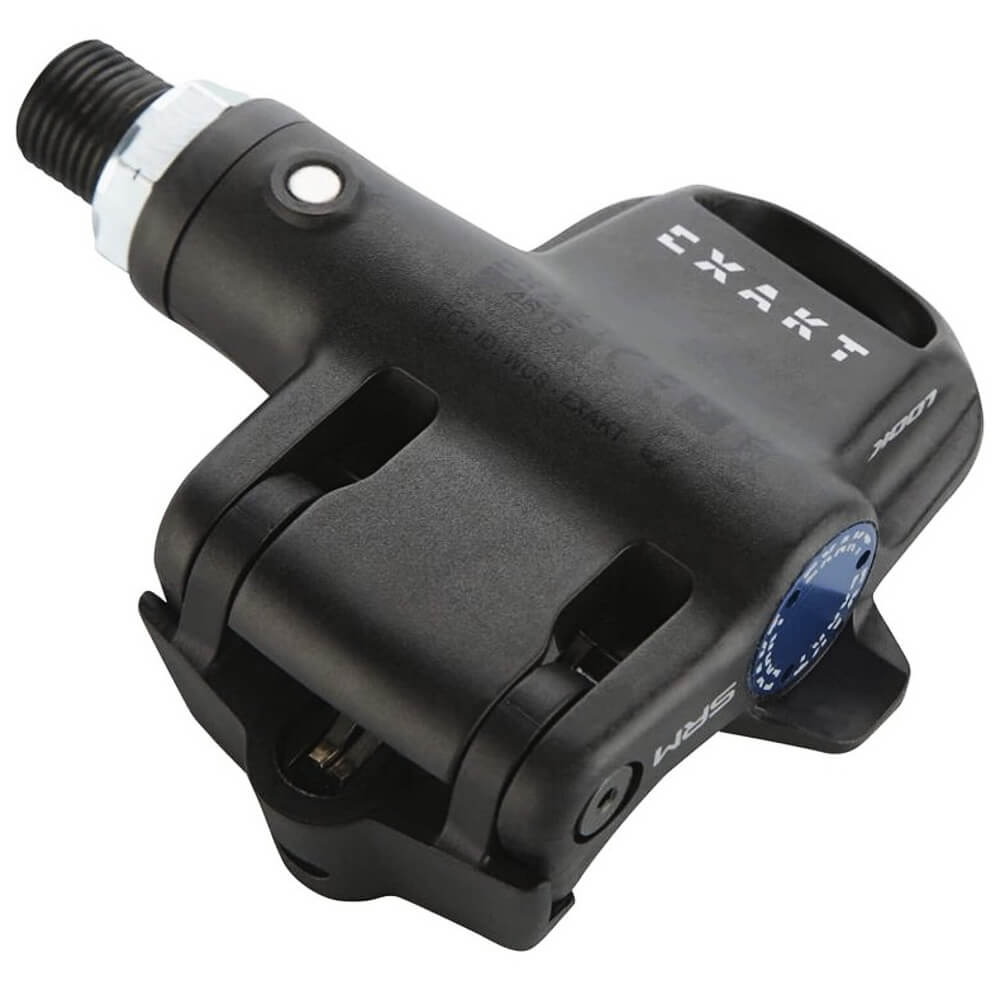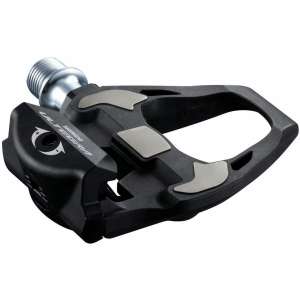What are Power Meter Pedals and Why Choose Used Ones?
Power meter pedals are cutting-edge cycling accessories that measure the force applied during each pedal stroke, offering valuable insights into a cyclist’s performance. By analyzing this data, cyclists can optimize their training, track progress, and pinpoint areas for improvement. The primary advantage of opting for used power meter pedals lies in their cost-effectiveness and quick availability, making them accessible to a broader range of cycling enthusiasts.
Top Used Power Meter Pedals in the Market
When it comes to used power meter pedals, several reputable brands and models stand out in the market. Garmin Vector 3, Favero Assioma, and Powertap P1 are among the most popular options, offering impressive features, performance, and value. Let’s explore each of these used power meter pedals in more detail:
Garmin Vector 3
The Garmin Vector 3 is a highly-regarded power meter pedal, known for its accuracy and seamless integration with Garmin cycling computers. Its lightweight design and user-friendly features make it a favorite among cyclists. When purchasing used Garmin Vector 3 pedals, ensure that they come with the necessary components, such as the pedal body, axle, and sensor pods, as well as the original box and documentation.
Favero Assioma
The Favero Assioma is another top choice for used power meter pedals, offering exceptional accuracy and reliability. These pedals are also compatible with various cycling computers and smartphones, making them a versatile option. When buying used Favero Assioma pedals, pay attention to factors like battery life, pedal condition, and any signs of wear or damage. Additionally, ensure that the pedals include the necessary tools and accessories for installation and setup.
Powertap P1
The Powertap P1 is a durable and robust power meter pedal, offering advanced features such as dual-sided power measurement and Bluetooth and ANT+ connectivity. When purchasing used Powertap P1 pedals, verify that they are fully functional and compatible with your cycling computer or smartphone. Also, check for any signs of damage, such as scratches or cracks, and ensure that the pedals come with the necessary components and accessories.
How to Select the Right Used Power Meter Pedals for Your Needs
Selecting the perfect used power meter pedals involves careful consideration of several factors. By following this step-by-step guide, you can ensure that you make an informed decision and invest in the right power meter pedals for your cycling needs:
Step 1: Define Your Budget
Determine how much you are willing to spend on used power meter pedals. This will help you narrow down your options and focus on models that fall within your price range.
Step 2: Check Compatibility with Your Bike
Ensure that the used power meter pedals you are interested in are compatible with your bike. Consider factors such as the bike’s frame material, bottom bracket type, and crank length. Additionally, verify that the pedals have the correct thread size (9/16″ or 1/2″) for your bike.
Step 3: Evaluate Data Accuracy Requirements
Consider the level of accuracy you require from your used power meter pedals. High-performance cyclists may prioritize pedals with a higher accuracy rating, while recreational cyclists might be satisfied with a more modest level of precision.
Step 4: Research Popular Used Power Meter Pedals
Familiarize yourself with popular used power meter pedals, such as Garmin Vector 3, Favero Assioma, and Powertap P1. Learn about their features, pros, and cons, and compare them based on your budget, compatibility, and accuracy requirements.
Step 5: Read Reviews and User Testimonials
Seek out reviews and user testimonials for the used power meter pedals you are considering. This can provide valuable insights into the pedals’ performance, durability, and user experience.
Step 6: Verify Pedal Condition and Accessories
When purchasing used power meter pedals, ensure that they are in good condition and include all necessary components and accessories. Check for signs of wear, damage, or missing parts, and verify that the pedals come with the original box and documentation.
Where to Buy and What to Check When Purchasing Used Power Meter Pedals
When searching for the perfect used power meter pedals, consider exploring various sources to find the best deals and options. Here are some of the best places to buy used power meter pedals and essential tips on what to check when purchasing:
Online Marketplaces
Websites like eBay, Craigslist, and Facebook Marketplace often have a wide selection of used power meter pedals at competitive prices. When buying from online marketplaces, ensure that the seller has a good reputation and read the product description carefully to verify the pedals’ condition, compatibility, and included accessories.
Local Bike ShopsHow to Install and Set Up Used Power Meter Pedals
After acquiring your used power meter pedals, follow these steps to ensure a proper installation and setup process:
Tools Needed
To install used power meter pedals, you will need:
- A pedal wrench or Allen keys, depending on the pedal type
- Grease for the pedal threads
- Your cycling computer or smartphone to pair the pedals
Step-by-Step Installation Instructions
- Clean the pedal threads on your bike’s crank arms to remove any dirt or debris.
- Apply a thin layer of grease to the pedal threads to ensure a smooth installation and prevent seizing.
- Insert the pedal into the crank arm, turning it clockwise until it is hand-tight. Use your pedal wrench or Allen key to tighten the pedal further, ensuring it is secure but not overly tight.
- Repeat the process for the other pedal, making sure to turn it counter-clockwise when inserting it into the left crank arm.
Calibration Tips
- After installing the pedals, pair them with your cycling computer or smartphone using the appropriate communication protocol (Bluetooth or ANT+).
- Follow the manufacturer’s instructions to calibrate the power meter pedals. This typically involves zeroing the pedals or performing a spin-down calibration to ensure accurate data collection.
- Regularly check the calibration of your power meter pedals and recalibrate them as needed, especially if you notice any discrepancies in the data or if you have made any adjustments to your bike setup.
Proper installation and setup of your used power meter pedals are crucial for accurate data collection and improved cycling performance. By following these steps, you can ensure a smooth and successful installation process.
Maintaining and Troubleshooting Used Power Meter Pedals
Regular maintenance and occasional troubleshooting are essential to ensure the longevity and accuracy of your used power meter pedals. Here are some tasks to perform and tips to follow:
Cleaning
- Clean your power meter pedals regularly using a soft cloth, warm water, and mild soap. Avoid using harsh chemicals or abrasive materials that may damage the pedals or their sensors.
- Dry the pedals thoroughly after cleaning to prevent corrosion or water damage.
- Inspect the pedals for any signs of dirt, debris, or damage and address any issues promptly.
Battery Replacement
- Check the battery life of your used power meter pedals regularly. Most pedals will provide a low-battery warning, but it’s best to replace the batteries before they run out completely.
- Follow the manufacturer’s instructions for replacing the batteries. Some pedals may require special tools or techniques, so it’s essential to consult the user manual or the manufacturer’s website for guidance.
Firmware Updates
- Check for firmware updates regularly, as manufacturers may release updates to improve performance, accuracy, or connectivity.
- Follow the manufacturer’s instructions for updating the firmware. This typically involves connecting the pedals to your cycling computer or smartphone and following a series of prompts to install the update.
Troubleshooting Common Issues
- Connectivity Problems: If you’re experiencing connectivity issues between your power meter pedals and your cycling computer or smartphone, try resetting both devices, checking for firmware updates, and ensuring that the communication protocol (Bluetooth or ANT+) is enabled.
- Data Discrepancies: If you notice any discrepancies in the data collected by your power meter pedals, try recalibrating the pedals, checking for firmware updates, and ensuring that the pedals are properly installed and aligned.
By following these maintenance and troubleshooting tips, you can ensure that your used power meter pedals remain accurate, reliable, and long-lasting. Regular care and attention will help you make the most of your investment and enhance your cycling experience.
Real-Life Experiences of Cyclists Using Power Meter Pedals
Power meter pedals have become increasingly popular among cyclists seeking to improve their training and performance. Here are some testimonials and stories from cyclists who have used power meter pedals, highlighting the benefits and improvements they experienced:
Testimonial 1: Enhanced Training Insights
“Using power meter pedals has given me a whole new level of insight into my training. I can now track my power output, pedal efficiency, and cadence in real-time, allowing me to make adjustments and improvements on the fly.” – John D., Competitive Cyclist
Testimonial 2: Injury Prevention and Recovery
“As a cyclist recovering from a knee injury, power meter pedals have been invaluable in helping me monitor my progress and ensure that I’m not overexerting myself. By tracking my power output, I can gradually increase my training load and reduce the risk of re-injury.” – Sarah K., Recreational Cyclist
Testimonial 3: Virtual Racing Success
“I’ve been using power meter pedals for my virtual races, and the data they provide has been instrumental in helping me optimize my performance and strategy. I’ve seen significant improvements in my race times and overall cycling ability.” – Mark S., Virtual Cyclist
Testimonial 4: Professional Recommendation
“My coach recommended that I use power meter pedals to track my progress and fine-tune my training. Since incorporating them into my routine, I’ve noticed a marked improvement in my power output, endurance, and overall cycling performance.” – Lisa T., Amateur Cyclist
These testimonials demonstrate the value and benefits that power meter pedals can bring to cyclists of all levels. By providing real-time data and insights, power meter pedals can help cyclists optimize their training, improve their performance, and prevent injuries.
Conclusion: Making the Most of Your Used Power Meter Pedals
Selecting, installing, maintaining, and utilizing used power meter pedals effectively can significantly enhance your cycling experience and performance. By following the guidelines provided in this article, you can ensure that you invest in the right power meter pedals for your needs and budget. Remember to consider factors such as compatibility with your bike, data accuracy requirements, and budget when choosing your used power meter pedals.
When purchasing used power meter pedals, always check the pedal condition, battery life, and warranty before making a purchase. Proper installation and setup are crucial for accurate data collection, so follow the step-by-step instructions and calibration tips provided in this article. Regular maintenance tasks, such as cleaning, battery replacement, and firmware updates, will help keep your used power meter pedals in good working order. Be prepared to troubleshoot common issues, such as connectivity problems and data discrepancies, by following the tips provided in the Maintaining and Troubleshooting section.
Real-life experiences shared by cyclists highlight the benefits and improvements that power meter pedals can bring to training and performance. By making the most of your used power meter pedals, you can unlock valuable insights into your cycling performance, optimize your training, and achieve your cycling goals. Happy cycling!







